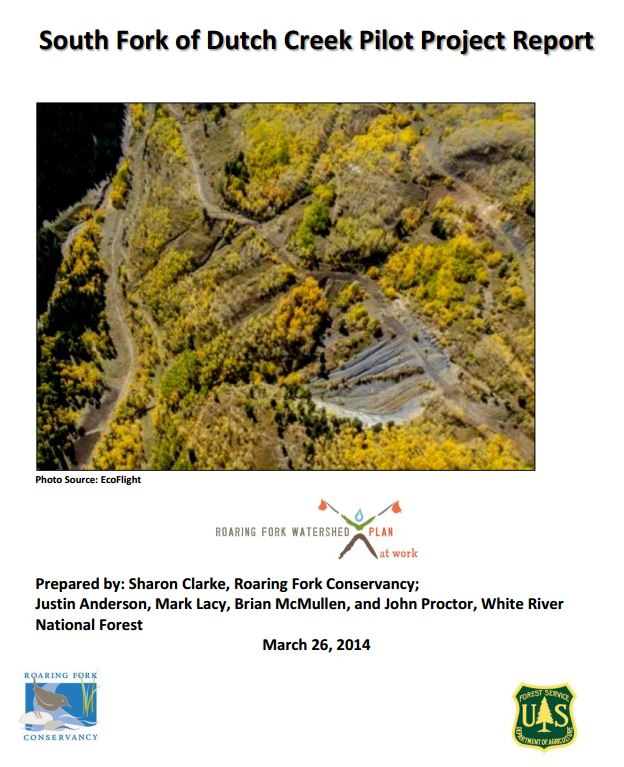Fifty years of large-scale coal mining activities occurred in Coal Basin, a western Colorado watershed characterized by naturally steep, unstable and highly erodible slopes. Today, erosion from the prior resource extraction and the landscape alteration caused by these activities, as well as sedimentation from naturally-occurring soil erosion and mass movements are degrading water quality and stream habitat in Coal Basin and contributing to sedimentation issues downstream in the Crystal River. In addition, Coal Creek Road (FSR 307) and 17 miles of historic mining roads are causing stream bank instability and sediment transport issues throughout the basin. Although the Colorado Division of Reclamation, Mining & Safety (CDRMS) completed a series of restoration projects in Coal Basin from 1994-2004, nearly 650 acres of disturbed area directly connected to the Coal Creek stream system remains. Decommissioned mining road reclamation work was conducted on 10 acres in Coal Basin. This pilot effort was designed to assess the cost-effectiveness and utility of using soil amendments on disturbed soils (including compost and a compost/biochar mixture), coupled with drainage improvements to reduce the volume of surface runoff, improve the water and nutrient-holding capacity of the soils, reduce soil compaction and bulk density, and enhance the growth of native vegetation.

This project was funded by a Colorado Water Conservation Board Watershed Restoration grant. Supplemental funding was provided by Pitkin County from the Pitkin County Healthy Rivers and Streams Fund. Significant in-kind labor was provided by the U.S. Forest Service, White River National Forest for project design and implementation, as well as soil and vegetation monitoring.